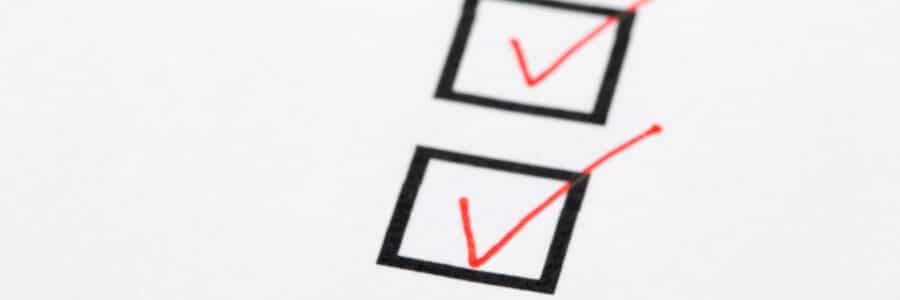A Safety Checklist For Fire Doors
There are strict legal and mandatory regulations with regards to the fire safety aspects for commercial and some residential buildings, and one of the most important considerations is fire doors themselves that are installed. These fire doors are essential in preventing the spread of heat, flame, and potentially fatal smoke in the unfortunate event of a fire outbreak which could cause damage to the property, as well as potential injury and loss of life to occupants. Fire safety doors will be placed throughout the building at strategic places, along with all building entry and exit points – these fire doors are vital to the welfare of the people inside and, therefore, need to be regularly maintained and checked. Here are some aspects of fire door maintenance to consider including a checklist of the individual considerations of these doors:
Responsibilities
All commercial – and some residential – buildings will have a named person or persons responsible for the fire safety within. Whilst it is often initially the responsibility of the contractor/developer/Project Manager of the initial construction to ensure these features are installed wherever required, the newly amended and updated Regulatory Reform (Fire Safety) 2005 (implemented from 1st October 2023) requires a ‘suitable’ person to be appointed to regularly consider these safety issues as part of the Fire Risk Assessment process. Careful and regular inspection of these commercial security doors must be performed, and any fault or defects discovered MUST be addressed immediately.
Door Closers
All fire doors must be fitted with an automatic closing device – this is to ensure that, once passed through, the door closes without the person having to remember to manually do it. Self-closing door mechanisms should always be functional – test whether it closes correctly from both a narrow and wide opening angle. When closed ensure the door is tightly closed and seals are working effectively.
Door Opening Devices
The other side of the automatic door closers – these devices are designed to hold a door in an open position under everyday conditions, but automatically release in the event of a fire outbreak. Ensure that regular checks are performed for any wear and tear with any malfunction or deterioration of the mechanism, and if so, is replaced or fixed immediately.
Note that for any fire door to be effective in preventing the spread of heat, smoke and flame, the door MUST be closed – therefore wedging a fire door open, for any purpose, MUST NOT be allowed.
Hinges, Locks And Latches
Whilst perhaps not considered as obvious safety features as such, all hinges, locks and latches must be maintained in full working order, The fire doors must be hung on a minimum of three hinges and you must ensure all have the correct number of screws and that they are regularly tightened and that the handle and lock work efficiently. Ensure all locks and latches fit comfortably and tightly and check for any signs of metal fragments or dust that may indicate wear and tear.
Doors And Frames
The frames and the door fixture itself must always be secured and functional. Check for any damage to the door or any warping – there should be no holes, spaces, or gaps that could compromise the door and that smoke could filter through in the event of a fire outbreak. It is always worth checking the door lock to ensure there are no keyholes or such which could provide a gap.
Glazing
In environments where the fire doors need to be fitted with glazed panels, check that the glazed panels are of the required specification and that the beading securing them in place is firmly affixed and unbroken. In the event of any of these glazed panels needing to be replaced, ensure that the new panel is of equal specification as the original.
Exposed Gaps
One of the most vulnerable parts of any fire door for commercial buildings is the ‘settle gap’ between the frame and the door itself – there needs to be a gap of sorts for the door to move into and out from when in everyday use, but there is a minimum limit allowed. If you can see daylight through any gap around the door, then you have a problem as this can allow smoke through, and this will need addressing immediately.
Intumescent Seals
Intumescent seals should be fitted in and around the fire door to prevent the spread of smoke, heat, and flame – these seals are specifically designed to expand and fill any gap around the door when exposed to direct heat. These seals can become worn through use or damage and over time, so should be checked and maintained regularly – any compromised seals should be immediately replaced.
Signage And Certification
In the event of a fire outbreak many may become panicked and/or disoriented – all fire doors should display the relevant official signage! Signage instructing and reminding people that these doors should be kept free of obstruction or shut at appropriate times and are clearly marked as fire doors and exits can be a great help in a fire emergency. These fire doors should be properly certificated and carry labelling – often placed on the top or side – that authenticate the door as being appropriately fire-proofed, rated, and tested. These fire doors should also carry relevant warning signage highlighting fire exit routes and/or emergency lighting.
You should consult with established and experienced fire door specialists for important information with regards to installing and maintaining fire doors for both residential and commercial buildings.
Enfield Doors
If you would like more information about fire safety, please contact us. Our team will be happy to help with any enquiries that you might have.









